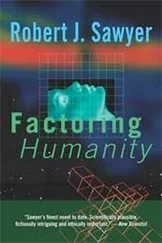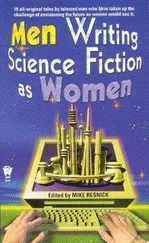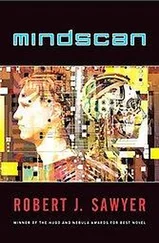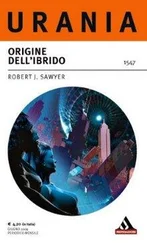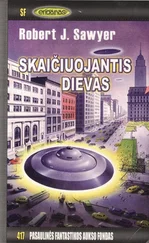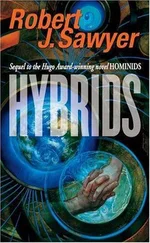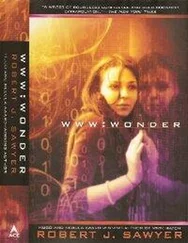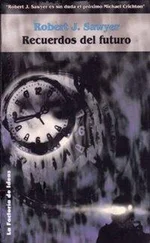Robert Sawyer - Calculating God
Здесь есть возможность читать онлайн «Robert Sawyer - Calculating God» весь текст электронной книги совершенно бесплатно (целиком полную версию без сокращений). В некоторых случаях можно слушать аудио, скачать через торрент в формате fb2 и присутствует краткое содержание. Город: New York, Год выпуска: 2000, Издательство: Tor Books, Жанр: Фантастика и фэнтези, на английском языке. Описание произведения, (предисловие) а так же отзывы посетителей доступны на портале библиотеки ЛибКат.
- Название:Calculating God
- Автор:
- Издательство:Tor Books
- Жанр:
- Год:2000
- Город:New York
- ISBN:нет данных
- Рейтинг книги:5 / 5. Голосов: 1
-
Избранное:Добавить в избранное
- Отзывы:
-
Ваша оценка:
- 100
- 1
- 2
- 3
- 4
- 5
Calculating God: краткое содержание, описание и аннотация
Предлагаем к чтению аннотацию, описание, краткое содержание или предисловие (зависит от того, что написал сам автор книги «Calculating God»). Если вы не нашли необходимую информацию о книге — напишите в комментариях, мы постараемся отыскать её.
Calculating God — читать онлайн бесплатно полную книгу (весь текст) целиком
Ниже представлен текст книги, разбитый по страницам. Система сохранения места последней прочитанной страницы, позволяет с удобством читать онлайн бесплатно книгу «Calculating God», без необходимости каждый раз заново искать на чём Вы остановились. Поставьте закладку, и сможете в любой момент перейти на страницу, на которой закончили чтение.
Интервал:
Закладка:
It seems to me that such a being would have considered two possibilities. One was to leave the remaining forty-two sequences undefined, just as there are letter sequences in real languages that don’t form valid words. That way, if one of those sequences cropped up in a string of DNA, you’d know that a mistake had occurred in copying — a genetic typo, turning the valid code A-T-A into, say, the gibberish A-T-C. That would be a clear, useful signal that something had gone wrong.
The other alternative would be to live with the fact that copying errors were going to occur, but try to reduce their impact by adding synonyms to the genetic language. Instead of having one word for each amino acid, you could have three words that mean the same thing. That would use up sixty of the possible words; you could then have two words that mean start and two more that mean stop, rounding out the DNA dictionary. If you tried to group the synonyms logically, you could help guard against transcription errors: if A-G-A, A-G-C, and A-G-G all meant the same thing, and you could only clearly read the first two letters, you’d still have a good shot at guessing what the word meant even without knowing the third letter.
In fact, DNA does use synonyms. And if there were three synonyms to specify each amino acid, one might look at the code and say, yup, someone had carefully thought this out. But two amino acids — leucine and serine — are specified by six synonyms each, and others by four, three, two, or even just one: poor tryptophan is specified only by the word T-G-G.
Meanwhile, the code A-T-G can mean either the amino acid methionine (and there are no other genetic words for it) or, depending on context, it can be the punctuation mark for “start transcription” (which also has no other synonyms). Why on Earth — or anyplace else — would an intelligent designer make such a hodgepodge? Why require context sensitivity to determine meaning when there were enough words available to avoid having to do that?
And what about the variations in the genetic code? As I’d told Hollus, the code used by mitochondrial DNA differs slightly from that used by the DNA in the nucleus.
Well, in 1982, Lynn Margulis had suggested that mitochondria — cellular organelles responsible for energy production — had started out as separate bacterial forms, living in symbiosis with the ancestors of our cells, and that eventually these separate forms were co-opted into our cells, becoming part of them. Maybe . . . God, it was a long time since I’d done any serious biochemistry . . . but maybe the mitochondrial and nuclear genetic codes had indeed originally been identical, but, when the symbiosis began, evolution favored mutations that allowed for a few changes in the mitochondrial genetic code; with two sets of DNA existing within the same cell, maybe these few changes served as a way to distinguish the two forms, preventing accidental mingling.
I hadn’t mentioned it to Hollus, but there were also some minor differences in the genetic code employed by ciliated protozoans — if I remember correctly, three codons have different meanings for them. But . . . I was blue-skying; I knew that . . . but some said that cilia, those irreducibly complex organelles whose death had brought about my own lung cancer, had started out as discrete organisms, as well. Maybe those ciliated protozoa that had a variant genetic code were descended from some cilia who had been in symbiosis with other cells in the past, developing genetic-code variations for the same safety-net reasons mitochondria had but, unlike the cilia we still retained, had subsequently broken off the symbiosis and returned to stand-alone life.
It was a possibility, anyway.
Still, when I’d been a kid in Scarborough, we’d shared a back fence with a woman named Mrs. Lansbury. She was very religious — a “Holy Roller,” my dad would say — and was always trying to persuade my parents to let her take me to church on Sundays. I never went, of course, but I do remember her favorite expression: the Lord works in mysterious ways.
Perhaps so. But I found it hard to believe he would work in shoddy, haphazard ones.
And yet —
And yet what was it Hollus had said about Wreed language?
It, too, relies on context sensitivity and the unusual use of synonyms. Maybe at some Chomsky-esque level, I just wasn’t wired properly to see the elegance in the genetic code. Maybe T’kna and his kin found it perfectly reasonable, perfectly elegant.
Maybe.
Suddenly the cat was out of the bag.
I hadn’t said a word to anyone about the Merelcas’s mission being, at least in part, to look for God. And I was pretty sure the gorillas in Burundi had been mum on the topic. But all at once, everyone knew.
There was a row of newspaper boxes by the entrance to North York Centre subway station. The headline on today’s Toronto Star said, “Aliens Have Proof of God’s Existence.” The headline on the Globe and Mail proclaimed, “God a Scientific Fact, Say ETs.” The National Post declared, “Universe Had a Creator.” And the Toronto Sun proclaimed just two giant words, filling most of its front page: “God lives!”
Usually I grabbed the Sun for light reading on the way to work, but for in-depth coverage, nothing beats the Mop and Pail; I dropped coins into the gray box and took a copy. And I stood there, in the crisp April air, reading everything above the fold.
A Hindu woman in Brussels had asked Salbanda, the Forhilnor spokesperson who met periodically with the media, the simple, direct question of whether he believes in any gods.
And he’d answered — at length.
And of course, cosmologists all over the planet, including Stephen Hawking and Alan Guth, were quickly interviewed to find out if what the Forhilnor had said made sense.
Religious leaders were jockeying for position. The Vatican — with rather a history of backing the wrong horse in scientific debates — was reserving comment, saying only that the pope would address the issue soon. The Wilayat al-Faqih in Iran denounced the alien’s words. Pat Robertson was calling for more donations, to help his organization study the claims. The moderator of the United Church of Canada embraced the revelations, saying that science and faith were indeed reconcilable. A Hindu leader, whose name, I noted, was spelled two different ways in the same article, declared the alien’s statements to be perfectly compatible with Hindu belief. Meanwhile, the ROM’s own Caleb Jones pointed out, on behalf of CSICOP, that there was no need to read anything mystical or supernatural into any of the Forhilnor’s words.
When I arrived at the ROM, the usual round of UFO nuts had been joined by several different religious groups — some in robes, some holding candles, some chanting, some kneeling in prayer. There were also several police officers, making sure that staff members — including but by no means limited to myself — made it safely into the museum; once the main doors opened for the day, they’d extend the same courtesy to patrons.
Laser-printed leaflets were blowing down the sidewalk; one that caught my eye showed Hollus, or another Forhilnor, with his eyestalks exaggerated to look like a devil’s horns.
I entered the museum and made it up to my office. Hollus wavered into existence a short time later. “I have been thinking about the people who blew up the abortion clinic,” he said. “You said they were religious fundamentalists.”
“Well, one presumes so, yes. They haven’t been caught yet.”
“No smoking gun,” said Hollus.
I smiled. “Exactly.”
“But if they are, as you suspect, religious people, why is that relevant?”
“Blowing up an abortion clinic is an attempt to protest a perceived moral outrage.”
Читать дальшеИнтервал:
Закладка:
Похожие книги на «Calculating God»
Представляем Вашему вниманию похожие книги на «Calculating God» списком для выбора. Мы отобрали схожую по названию и смыслу литературу в надежде предоставить читателям больше вариантов отыскать новые, интересные, ещё непрочитанные произведения.
Обсуждение, отзывы о книге «Calculating God» и просто собственные мнения читателей. Оставьте ваши комментарии, напишите, что Вы думаете о произведении, его смысле или главных героях. Укажите что конкретно понравилось, а что нет, и почему Вы так считаете.

